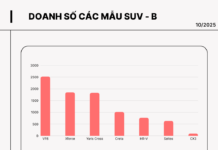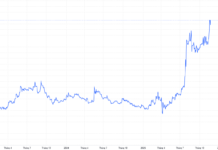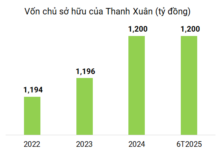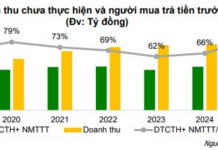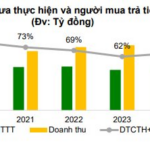
In the first four months of 2024, 21 commodities achieved an export turnover of over $1 billion, accounting for 86.4% of the total export turnover. Electronic products, computers, and components achieved a remarkable 34.9% growth rate compared to the same period last year, with a total export turnover of $21.6 billion.
During this period, Vietnam’s export structure witnessed a positive shift, with industrial and processed goods accounting for an estimated $108.27 billion, or 87.5% of the total export turnover. This growth was propelled by the outstanding performance of electronic products, computers, and components, which experienced a significant increase of 34.9% compared to the previous year, reaching an export turnover of $21.6 billion. This group of goods accounted for over 17.5% of the country’s total export turnover, with the EU, the US, and China as its primary export markets. Projections indicate that exports of electronics, computers, and components will continue to thrive in 2024.
A closer look at the provincial export turnover reveals that 21 provinces and cities surpassed the $1 billion mark in export turnover during the first four months of 2024, with four localities achieving export turnovers of over $10 billion. Ho Chi Minh City, the country’s economic hub, led the way with an export turnover of $14.7 billion, accounting for 11.9% of the country’s total export turnover. In April 2024 alone, the city’s export turnover is estimated to reach $3.7 billion.
Following Ho Chi Minh City, Bac Ninh province boasted an impressive export turnover of $11.21 billion, accounting for 9% of the country’s total. Thai Nguyen, Binh Duong, and Hai Phong also excelled, with export turnovers of $10.96 billion, $10.7 billion, and $9.5 billion, respectively.
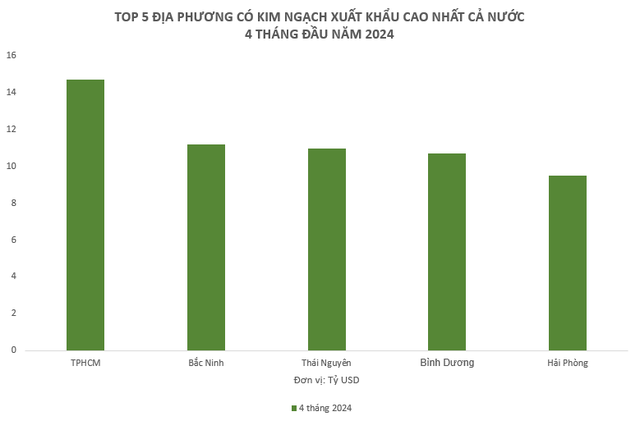
Source: General Department of Vietnam Customs
Analyzing the import and export markets during this period, the United States emerged as Vietnam’s largest export market, with an estimated turnover of $34.1 billion. On the import side, China remained the country’s primary source of imports, with a turnover of $41.6 billion.
In terms of trade balance, Vietnam achieved a remarkable surplus in its trade with the United States, with an estimated surplus of $29.6 billion, a 21.6% increase compared to the same period last year. This positive trend extended to the EU and Japan, with surpluses of $11.4 billion and $209 million, respectively. However, the trade deficit with China, Vietnam’s largest import market, widened to $23.6 billion, a 41.4% increase. The trade deficits with South Korea and ASEAN also increased, reaching $8.7 billion and $3.6 billion, respectively.
According to the General Statistics Office, exports are one of the three main drivers of economic growth. However, they have been significantly impacted by the slowdown in global trade, shrinking export markets, and declining consumer demand in key markets such as the US, EU, and Japan. Many businesses have struggled to secure new orders, leading to reduced production and challenges in retaining their workforce. To address these challenges, the government and relevant ministries have been actively implementing measures to expand export markets and negotiate market access, with notable successes in this regard.
To capitalize on these market access opportunities, it is crucial to focus on developing export-oriented products that meet quality standards, enhance value addition, and comply with rules of origin to qualify for preferential tariffs under various trade agreements. Additionally, businesses should seize the benefits offered by free trade agreements (FTAs) by leveraging lower tariffs and taking advantage of support mechanisms among FTA members. Removing non-tariff barriers, innovating trade promotion activities, and embracing digital transformation to boost exports are also essential strategies to enhance Vietnam’s export performance.

